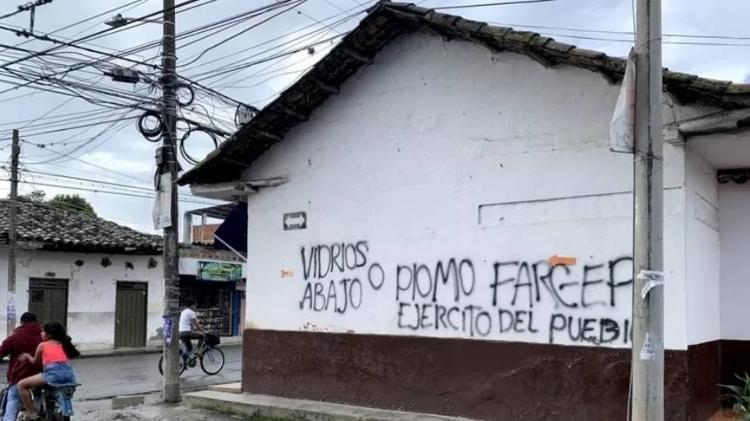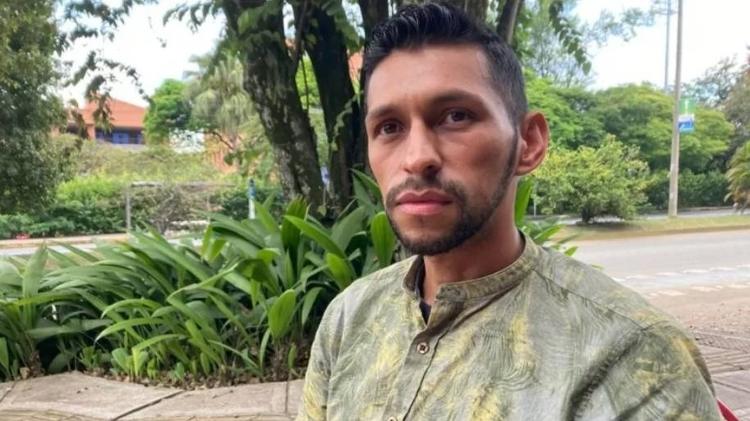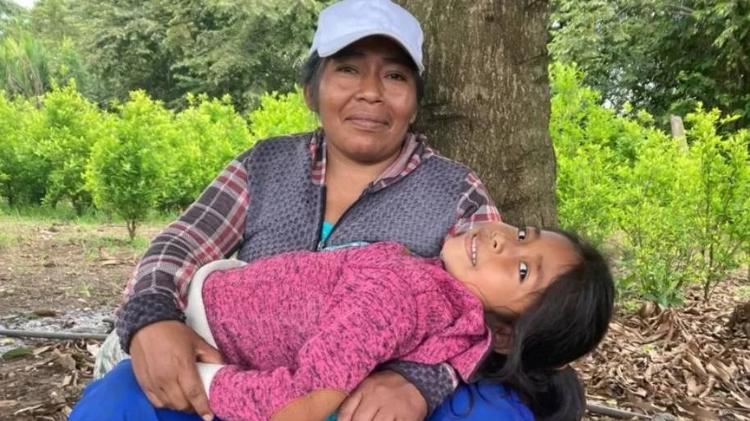Corinth feels like a bustling city like any other: motorcycles hum up and down the main streets, residents walk the sidewalks, and shopkeepers look for customers outside their stores.
But if someone stands in any corner, there is a more menacing presence.
The following sentence was painted on one wall: “Put the window or the bullets down”. And a signature: “FARC-EP” stands for Revolutionary Armed Forces of the Colombian-People’s Army.
This is a warning for drivers to identify themselves when entering the neighborhood. It is repeated on many walls of Corinth, southwest of the Colombian department of Cauca.
FARC guerrillas were demobilized in 2016 after signing a peace deal with the government. The movement ended more than fifty years of internal conflict.
But nearly six years later, the deal has yet to be fully implemented, and as violence has subsided since the deal, what’s happening in rural Colombia worries security experts.
Rejecting the deal, FARC members, right-wing paramilitaries and new criminal groups are vying for territory once controlled by the guerrilla group, all seeking new members.
defenseless children
According to the UN, around 600 children were recruited by armed gangs in the three years after the peace agreement was signed.
Poor Colombians living in rural areas formerly controlled by the FARC are the most likely to be the target of conscription. The most vulnerable are indigenous children.
Derli (not her real name), a 13-year-old girl, is part of the Nasa indigenous group that traditionally fights armed gangs. Derli wears a pink t-shirt that reads “Just love”, which contrasts with his past of violence.
Derli ran away from home because of the troubled relationship he had with his mother. He was tempted by the money offered by his FARC opponents and the fact that some of his friends had gone before him. But he soon regretted it.
“We learned to use weapons, we learned to kill and bind people,” he says, rubbing his hands nervously as he tells his story.
“They tied me up, they starved me,” he adds. “They always said this life was for tough guys. I was supposed to ride a motorcycle while someone was being executed. I never wanted to do that, but if you don’t you will be punished or killed.”
He points out the tidy window to the mountain where they took him. She says she was rescued one night by the chief of the indigenous group after a woman contacted him for help.
But even when he was at home, his nightmare continued.
“I’ve received death threats,” he says.
One day he woke up and found several people with guns in front of his house. “My parents hid me in a room.”
According to the Colombian transitional justice court, over 18,000 children were forced to join the FARC guerrillas over the course of 20 years. Recruiting and training child soldiers was a familiar tactic.
‘Guerrillas didn’t pay’
Many Colombians feel that despite the official ceasefire, the promised peace in the country’s countryside still does not exist.
“It didn’t get better, it got worse,” says Luz Marina Escué, a community leader who helps indigenous people find vulnerable children before they are conscripted or later rescued.
“The gangs come in, they make out piles of bills, they tell the kids to get what they want,” she says. “It is no longer a guerrilla fighting for the people, but groups that kill people.”
This is a sentiment expressed by Boris Guevara, a former member of the FARC. He joined the guerrillas at the age of 16 but gave up arms in 2016.
“The FARC never paid me. All economic activity was to support the military, not pay the soldiers,” he says. “I’ve never paid a penny for the work I do. It has created a huge chasm: between being a mercenary and a political consciousness that you sacrifice for something you believe in.”
According to Luz Marina Escué, the recruitment of children by these groups is destroying Colombia’s future.
“These are the seeds that will sow our soil,” he says.
On the other hand, most of this land is still filled with illegal plantations.
Coca and marijuana fields
On the other side of the valley are fields of coca and marijuana. Not all of these areas are hidden: some appear on the side of the road. At dusk, the slopes are illuminated by dots of light suspended above the marijuana fields.
The peace deal was intended to stop cocaine production, but it continues to increase. According to the United States, Colombia produced about 972 tons of coca in 2021. Ten years ago, this figure was 273 tons.
There are still farmers growing other crops. But a kilo of oranges sells for 15 cents, while cola or marijuana pays hundreds of times more.
“We are not drug traffickers,” says Irma Corpus, a coca farmer. Voluntary crop replacement was encouraged as part of the peace agreement, but many villagers felt that the government was not fulfilling its part of the agreement.
“Of course we agree on the elimination of[coca and marijuana plantations]but it has to be gradual, we have no alternative,” says Irma. “The peace agreement on paper was so elegant, they promised us everything but in reality nothing was delivered.”
Colombian youth are paying the price for the ongoing violence. Jovani Chilhueso received $400 (about R$2,000) for joining a gang. Some of his friends were killed in the area.
“When I first picked up a gun, I felt an adrenaline rush,” he says. “It was something I loved, I wanted to shoot, but the truth is, fighting is not the same as shooting.”
His father, Daniel Rivera, is a vigilante who protects his indigenous community from armed gangs. He did not expect his son to join one of them.
“I felt so much sadness and pain thinking I might lose my son,” Daniel says. “The first thing you think about is: where did I go wrong?, what did I do wrong?”
In these parts of Colombia, the path inside the law is difficult. Many expect the new president, Gustavo Petro, to deliver on his campaign promises, to reduce violence, to provide “total peace” to end what he calls “eternal war”, and also to offer young people the opportunity to build their own future.
– This text has been published actually inside https://www.bbc.com/portuguese/internacional-62639983
source: Noticias


